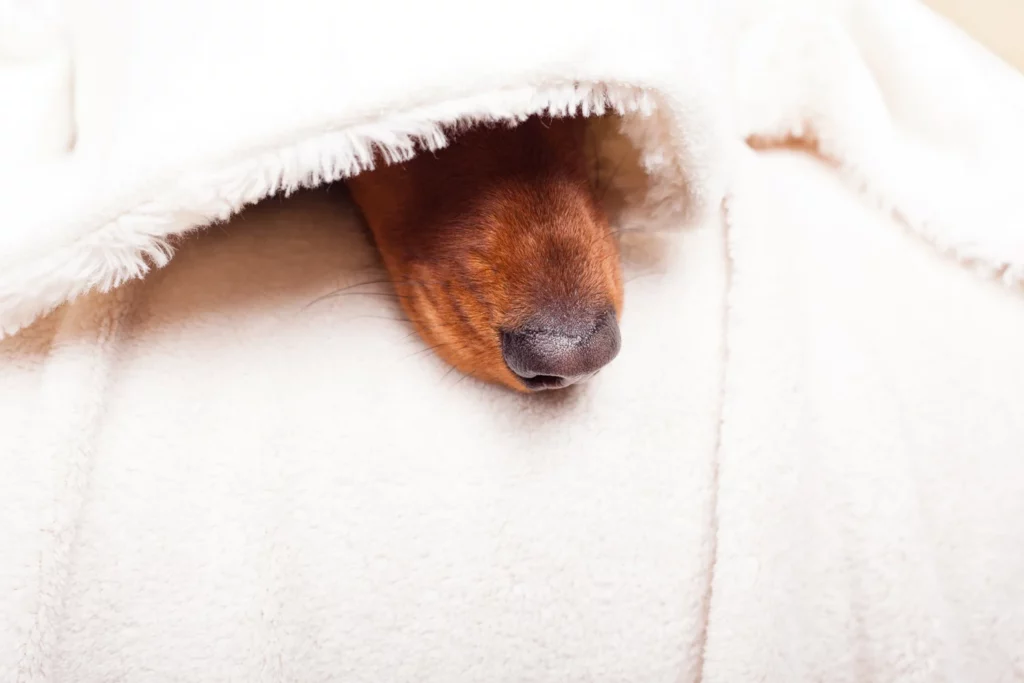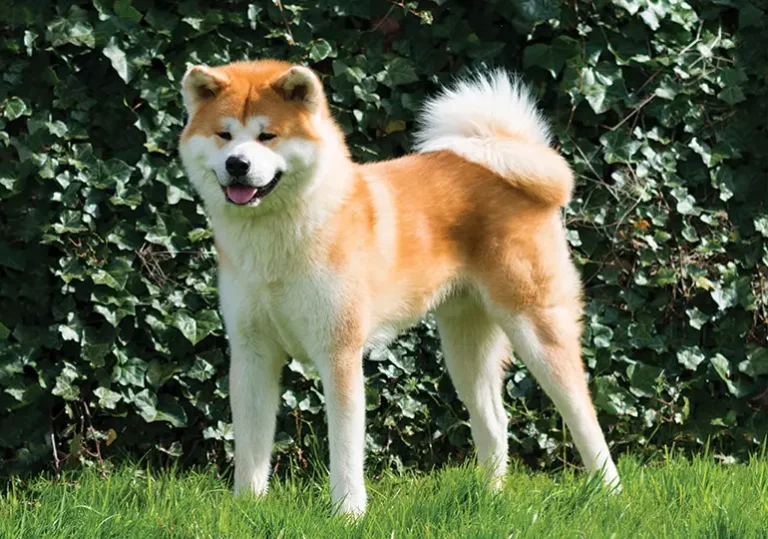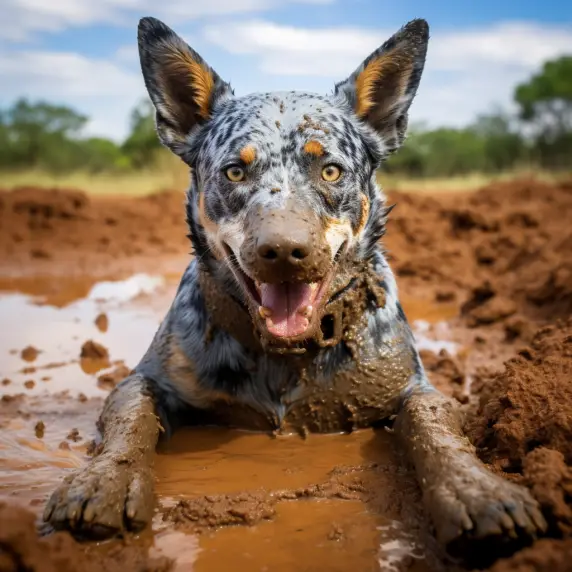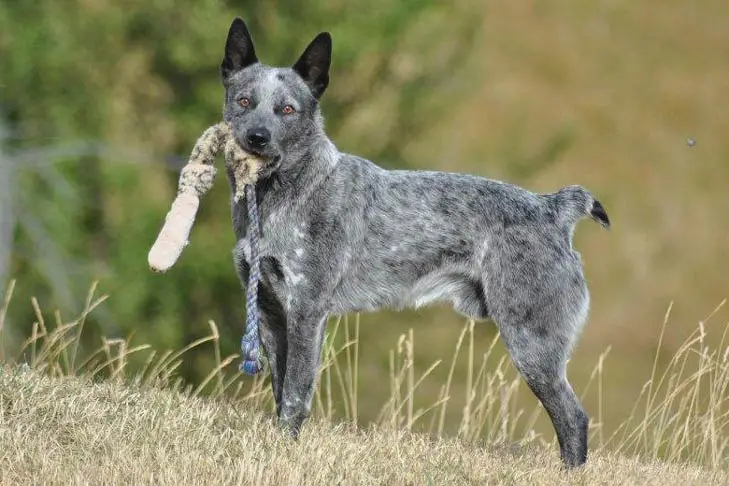The Science Behind Dachshunds’ Burrowing Instinct
Ever puzzled why your dachshund burrows under blankets or pillows? This article delves into the roots of this unique behavior, exploring their ancestry, physical traits, denning instincts, and comfort needs. Let’s uncover the mystery of why dachshunds burrow, so grab a blanket and your furry friend, and join us!
Key takeaways
Dachshunds have a natural burrowing instinct derived from their hunting history.
They were bred to dig into burrows to hunt badgers, which influences their behavior today.
Burrowing provides a sense of safety, warmth, and comfort for dachshunds.
Owners can accommodate this instinct by providing blankets or burrow beds for their dachshunds.
Understanding and accommodating this instinct can enhance a dachshund’s wellbeing and happiness.
The History and Ancestry of Dachshunds
Before we can fully understand the burrowing behavior of dachshunds, it’s important to take a step back and learn about their origins. The dachshund breed, affectionately known as “wiener dogs” or “sausage dogs,” hails from Germany, where they were first bred in the 15th century.
Their unique name translates to “badger dog” in German, which already gives us a hint about their original purpose.
Dachshunds were specifically bred to be expert hunting dogs, with a keen focus on tracking and flushing out small game, such as badgers and rabbits, from their underground dens. Their elongated body, short legs, and strong sense of smell were ideal for navigating through narrow tunnels and reaching their prey.
This hunting instinct is deeply ingrained in the breed, even if your dachshund has never set paw in a hunting field.
The connection between their hunting instincts and burrowing behavior becomes evident when we consider the environments they were bred to work in. Dachshunds needed to be comfortable and adept at navigating tight, enclosed spaces, as well as following their prey into burrows.
As a result, their natural inclination to burrow under blankets, pillows, or other soft materials is a remnant of the skills they developed for their original hunting purpose.
How a Dachshund’s Physical Characteristics Play a Role
Dachshunds are easily recognizable due to their distinctive physical features, including their elongated bodies and short legs. These traits are not just for looks; they actually play a significant role in the breed’s burrowing behavior.
- Elongated body: A dachshund’s long, slender body is specifically designed for navigating through narrow tunnels and burrows. Their compact size allows them to squeeze into tight spaces with ease, which is a valuable skill when it comes to hunting small game underground. When burrowing in blankets or pillows, their elongated body allows them to easily create a cozy and snug space.
- Short legs: While their short legs might make it seem like dachshunds aren’t built for speed, they are actually perfect for digging and burrowing. Their powerful limbs allow them to swiftly move dirt and debris, and their low center of gravity helps them maintain stability while digging. The combination of short legs and a long body also makes it easier for them to turn around in tight spaces, which is essential when navigating burrows.
- Strong sense of smell: Dachshunds possess a remarkable sense of smell, which is crucial for tracking prey underground. Their keen olfactory abilities help them locate the entrance to burrows and detect any potential danger. This strong sense of smell also plays a role in their burrowing behavior at home, as they might be attracted to the scent of their owner or other familiar scents embedded in blankets and pillows.
These physical characteristics, which have been honed through generations of breeding, are directly linked to the dachshund’s natural burrowing tendencies. It’s no wonder that they feel right at home when snuggled up under a pile of blankets or nestled in their favorite hiding spot!

The Instinct to Den
Another key factor in understanding why dachshunds burrow is their instinct to create a den. Denning is a natural behavior exhibited by many wild animals, including dogs’ ancestors, wolves. Dens provide a safe, secure, and comfortable space for animals to rest, sleep, and raise their young.
Although domesticated dogs have come a long way from their wild counterparts, the denning instinct is still present in many breeds, including dachshunds. This instinct drives them to seek out small, enclosed spaces that mimic the protective environment of a den.
Burrowing under blankets, pillows, or other soft materials allows them to create a den-like space where they can feel safe and secure.
Dachshunds may be particularly prone to denning behavior due to their history as hunting dogs. As mentioned earlier, their job was to enter underground tunnels and burrows to flush out small game.
This experience in navigating tight, enclosed spaces has made them particularly adept at creating their own cozy dens.
By understanding their instinct to den, it becomes clear why dachshunds are so drawn to burrowing. This behavior not only connects them to their ancestral roots but also fulfills a basic need for security and comfort in their everyday lives.
The Comfort and Security of Burrowing
Beyond the historical and instinctual reasons for their burrowing behavior, dachshunds also find a great deal of comfort and security in their self-made dens. Let’s explore the psychological aspect of burrowing and how it benefits these lovable dogs.
- Sense of security: Just like humans, dogs need a sense of security in their lives. The act of burrowing provides dachshunds with a feeling of safety, as they are surrounded by a protective barrier. This can be especially important for dogs that are prone to anxiety or stress, as the enclosed space can help them feel more relaxed and protected.
- Comfort: Dachshunds, like all dogs, appreciate a comfortable place to rest and sleep. Burrowing under blankets or pillows provides them with a cozy and warm environment, perfect for snuggling up in. This can be particularly appealing during colder months when the extra insulation helps to keep them warm and toasty.
- Bonding with their owner: Burrowing under blankets can also serve as a way for dachshunds to feel closer to their owners. The scent of their owner on the bedding provides a sense of familiarity and comfort, and many dachshunds enjoy cuddling up close to their human companions while burrowed.
By providing a sense of security, comfort, and bonding, burrowing behavior contributes to the overall well-being and happiness of dachshunds. As a dachshund owner, it’s important to recognize and support their need for this cozy and comforting behavior.
How to Support Your Dachshund’s Burrowing Needs
Now that we understand the reasons behind dachshunds’ burrowing behavior, it’s essential to ensure that you’re providing the appropriate environment and support for your furry friend’s natural instincts. Here are some suggestions for creating a cozy and safe burrowing space for your dachshund:
- Choose the right bedding: Opt for soft and plush materials that your dachshund can easily burrow into, such as fleece or flannel blankets. Avoid materials that can easily become tangled or are difficult for your dog to maneuver, as this could lead to frustration or potential hazards.
- Provide a dedicated burrowing spot: Designate a specific area in your home for your dachshund’s burrowing activities. This could be a cozy corner with a pile of blankets, a dedicated dog bed with a built-in burrowing feature, or even a soft-sided crate with ample bedding.
- Monitor temperature: Be mindful of the temperature in your home and your dachshund’s burrowing spot. Ensure that the area is not too hot or too cold, as extreme temperatures could be uncomfortable or even dangerous for your dog.
- Keep it clean: Regularly wash your dachshund’s bedding to maintain a clean and healthy burrowing environment. This will help to prevent any potential health issues and keep your dog’s den smelling fresh and inviting.
Encourage burrowing during playtime: Integrate burrowing into your dachshund’s daily playtime by using toys or games that incorporate burrowing activities. This will not only help to satisfy their burrowing instincts but also provide mental stimulation and exercise.
By creating a supportive environment for your dachshund’s burrowing needs, you’ll help to ensure their happiness, comfort, and overall well-being. Plus, you’ll get to enjoy watching their delight as they snuggle up in their cozy den!

Addressing Potential Health Concerns
While burrowing is a natural and generally healthy behavior for dachshunds, it’s essential to be aware of potential health concerns and take necessary precautions to keep your furry friend safe. Here are some tips on how to address these concerns and maintain a clean, healthy burrowing space:
- Overheating: One potential risk associated with burrowing is overheating, especially during warmer months or in a heated home. To avoid this, ensure that your dachshund’s burrowing spot is well-ventilated and not too warm. Monitor your dog’s body temperature by occasionally checking their ears, nose, and paws for signs of overheating, such as excessive panting or discomfort.
- Supervision: While it’s important to give your dachshund the freedom to burrow, it’s also essential to monitor their activities, especially when they’re burrowing in a new environment or under heavy blankets. This will help you ensure that they’re safe and not at risk of getting trapped or entangled.
- Maintaining cleanliness: A dirty burrowing environment can lead to potential health issues, such as skin irritations, allergies, or infections. To prevent this, regularly wash your dachshund’s bedding and ensure that their burrowing spot is kept clean and free of debris.
- Discourage burrowing in unsafe spaces: Dachshunds may be tempted to burrow under furniture, such as sofas or beds, which can pose potential risks. Train your dog to avoid burrowing in these unsafe areas by providing alternative, safer burrowing spots and redirecting them if they attempt to burrow in hazardous locations.
By addressing potential health concerns and taking the necessary precautions, you’ll ensure that your dachshund’s burrowing behavior remains a safe and enjoyable part of their daily routine. This will contribute to their overall well-being and happiness while allowing them to embrace their natural instincts.
Embracing Your Dachshund’s Unique Personality
As a dachshund owner, it’s important to understand and appreciate your dog’s natural instincts and unique personality traits. By doing so, you’ll be able to provide them with the support and environment they need to thrive. Here are some suggestions for embracing and celebrating your dachshund’s burrowing behavior:
- Learn from their instincts: Your dachshund’s burrowing behavior offers a window into their history and instincts. Take the time to learn about their breed’s background and how it has shaped the behaviors and traits you see today. This knowledge will help you better understand your dog’s needs and deepen your bond with them.
- Engage with your dachshund: Show interest in your dachshund’s burrowing activities and participate in their routine. For example, you could help them “fluff” their blankets, join them for a snuggle session, or play games that involve burrowing. This will not only strengthen your connection with your dog but also make them feel supported and understood.
- Share your experiences: Connect with fellow dachshund owners through social media, online forums, or local meet-ups to share stories and tips about your dachshunds’ burrowing behavior. By doing so, you’ll create a supportive community of like-minded individuals who appreciate and celebrate the unique traits of this breed.
- Educate others: Help dispel misconceptions about dachshunds’ burrowing behavior by educating friends, family, and other dog owners about the reasons behind it. This will contribute to a broader understanding and appreciation of the breed’s unique characteristics.
Embracing and celebrating your dachshund’s burrowing behavior is not only beneficial for their well-being but also deepens the bond between you and your furry companion. By understanding and supporting their instincts, you’ll ensure a happy, healthy, and fulfilling life for your beloved dachshund.
Frequently Asked Questions
Can I train my dachshund to stop burrowing?
While you may be able to minimize your dachshund’s burrowing behavior with training, it’s important to remember that burrowing is a natural instinct deeply rooted in their history and genetics. Instead of trying to eliminate this behavior entirely, focus on providing a safe and appropriate space for them to burrow and redirecting them to that designated area when necessary.
Are there any dangers associated with dachshunds burrowing under furniture?
Yes, there can be potential dangers associated with dachshunds burrowing under furniture, such as getting trapped, injured, or overheating due to poor ventilation. To prevent these risks, it’s essential to train your dachshund to avoid burrowing in unsafe areas and provide them with a designated, safe burrowing spot.
How do I know if my dachshund is too hot while burrowing?
Signs that your dachshund may be too hot while burrowing include excessive panting, restlessness, drooling, or even trying to escape the burrow. If you notice any of these symptoms, remove your dachshund from the burrow and provide them with a cooler environment. Be mindful of the temperature in their burrowing spot and ensure it’s not too warm, especially during hot weather.
Do all dachshunds burrow, or is it unique to certain individuals?
While burrowing is a common behavior among dachshunds due to their history and instincts, it may vary in frequency and intensity from one dog to another. Some dachshunds may burrow more often or enthusiastically than others, while some may show less interest in burrowing. It’s essential to understand your dachshund’s unique personality and preferences and accommodate their individual needs.
What other breeds display burrowing behavior similar to dachshunds?
Many other breeds also exhibit burrowing behavior, particularly those with a history of hunting, digging, or denning. Some of these breeds include terriers (such as Jack Russell Terriers and Cairn Terriers), Beagles, and Miniature Schnauzers. However, it’s important to note that individual dogs within a breed may display varying levels of burrowing behavior, depending on their genetics, upbringing, and personal preferences.
Final Thoughts
Dachshunds are undeniably unique and endearing dogs, and their burrowing behavior is just one of the many traits that make them so special. As we’ve explored in this article, their natural inclination to burrow can be traced back to their ancestry, physical characteristics, and instincts.
By understanding the reasons behind this behavior, you can better support your dachshund’s needs and create a safe, comfortable, and nurturing environment for them.
Embrace your dachshund’s burrowing tendencies and celebrate the incredible history and instincts that have shaped them into the dogs we know and love today. By doing so, you’ll not only enhance your dachshund’s quality of life but also deepen your bond and connection with your beloved furry companion.
So go ahead, snuggle up with your dachshund, and cherish the delightful experience of sharing a cozy burrow together!






